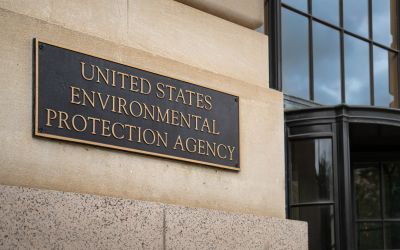Low-carbon transport - soon a reality?
Can business and Governments work together towards low carbon transport emissions?
At the beginning of this month, London launched the world's first Low Emission Zone (LEZ). The aim of the initiative is to improve air quality in the city by deterring the most polluting vehicles from driving in London.
This includes older diesel-engine lorries, buses, coaches, large vans, minibuses and other heavy vehicles, such as motor caravans and motorised horse boxes. The LEZ is enforced using a database of registered vehicles which meet LEZ emissions standards.
Number plates are recognised using mobile cameras and if the vehicle is not on the register then a charge of between £100 and £200 must be paid. The scheme is as yet untested, but its proponents argue it could make a real difference as part of a wider strategy to tackle transport emissions.
In the UK, ground-based transport makes up around 22% of carbon emissions.
According to the most recent statistics from the Department for Environment and Rural Affairs (defra), road transport produced 1,124 tonnes of CO2 in 2005 and many feel that the roads are the worst pollutants in the transport sector.
Aviation is regularly discussed, but globally it is actually only responsible for around 1.6% of total greenhouse gas emissions. Rail comes out best of all, and in the UK is only responsible for around 1% of total carbon emissions.
Across Europe, politicians agree that low-carbon transport solutions are urgently needed, but progress seems to be painfully slow. European Commission President Jose Manuel Barroso has announced "historic" plans to make Europe "the first economy for the low-carbon age."
The commission proposes that the Emissions Trading Scheme (ETS) should be extended to include more industrial sectors in the years between 2013 and 2020.
However the proposals do not include transport emissions, which are not covered by the ETS, and while the commission has put forward national targets for transport emissions, the final package has to be endorsed by members of the European Parliament (MEPs) plus member states and might not come into force before the end of 2009.
Further innovations aimed at combating carbon emissions across London have included the installation of electric vehicle recharging points across the capital, the introduction of a £25 congestion charge fee for gas-heavy 4 x 4s, and the introduction of a bike hire scheme which will see 6,000 bikes available to hire throughout London.
Philip Sellwood, Chief Executive of the Energy Saving Trust, says it is "only a small start, but a heartening counterbalance to all of the talk of the need to spend trillions of pounds of tax payers' money on technologies that one has to say, to date, have singularly failed to deliver a consistent cost-effective source of energy,"
So how can we continue to work together to cut road transport carbon emissions? The Low Carbon Vehicle Partnership (LowCVP) is a good example of Government and business collaboration. LowCVP is an action and advisory group which includes partners from across Government, environmental groups, road-user groups and business.
A spokesman for the Low Carbon Vehicle Partnership points out that achievements, including the introduction of a consumer-friendly eco-label for new cars and the development of an internationally recognised system for carbon and sustainability requirements for biofuels, "show that the partnership approach can deliver real results."
Getting Government and business to work together is not the only element in the fight to reduce transport carbon emissions – technology also plays a key role. The Government and industry are keen to reduce transport emissions by using cleaner fuels, and Warren Diogo, Underwriter for Ascot Renewco, points out that, "the insurance sector already provides an important role in providing cover during the construction and operation of industrial plants that produce bioethanol and biodiesel."
Since its launch in September 2007, Ascot Renewco has been actively involved in providing such cover for plants in Europe, the US and Brazil.
Richard Carroll of GCube Underwriting Ltd also believes that fuel cell technology in the longer term, and biofuels in the short to medium term, are going to play a major part in tackling transport emissions over the next few years.
"Providers of renewable energy insurance products should work with those companies that take the time and make the effort to invest in new technology that reduce emissions," he said, and clearly insurance will play a significant role in supporting the development of these technologies.
The Low Carbon Vehicle Partnership also believes that insurers can play an important role in this process and may directly help by, "offering clear signals to their own customers to hasten the shift to a low carbon transport system." Food for thought, as the mobile cameras in London's low emissions zones begin to click into action
.This article was provided courtesy of Lloyds.
By Roddy Langley





_400_250_80_s_c1.jpg)
